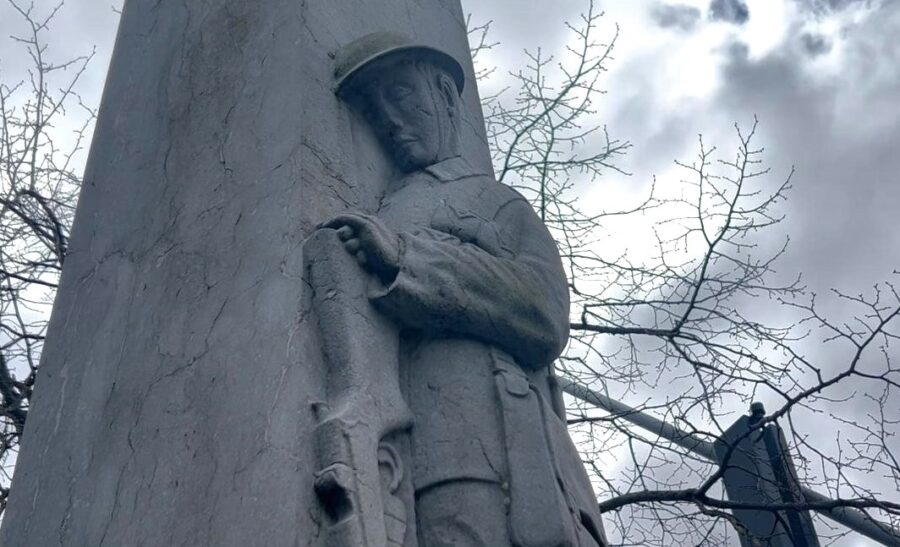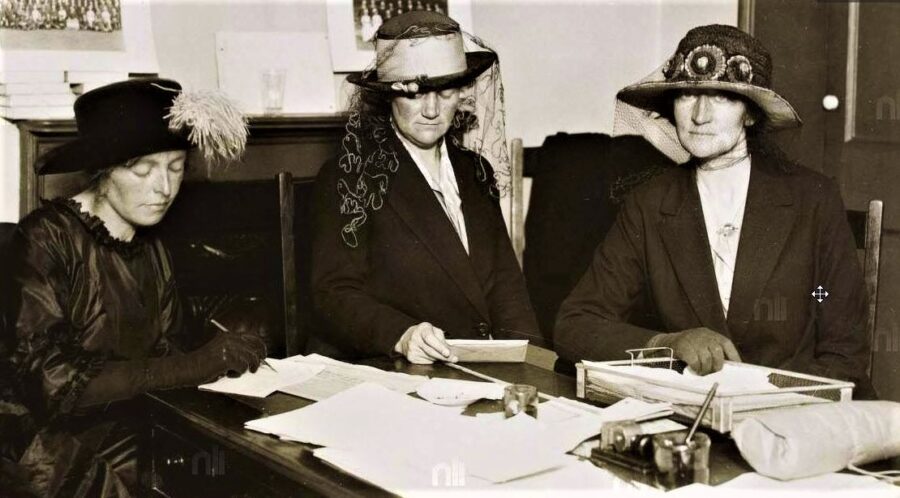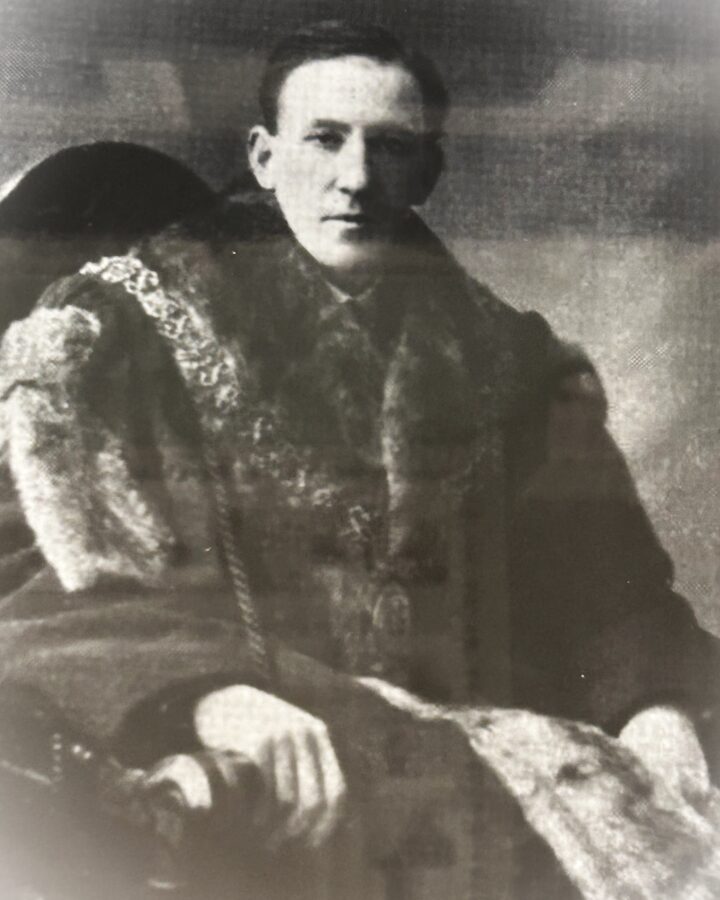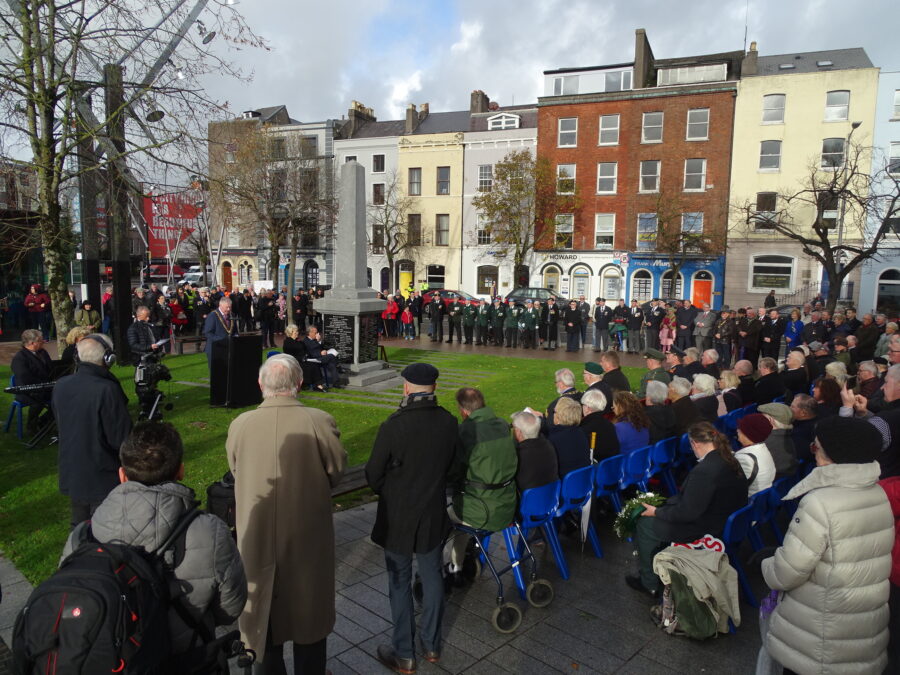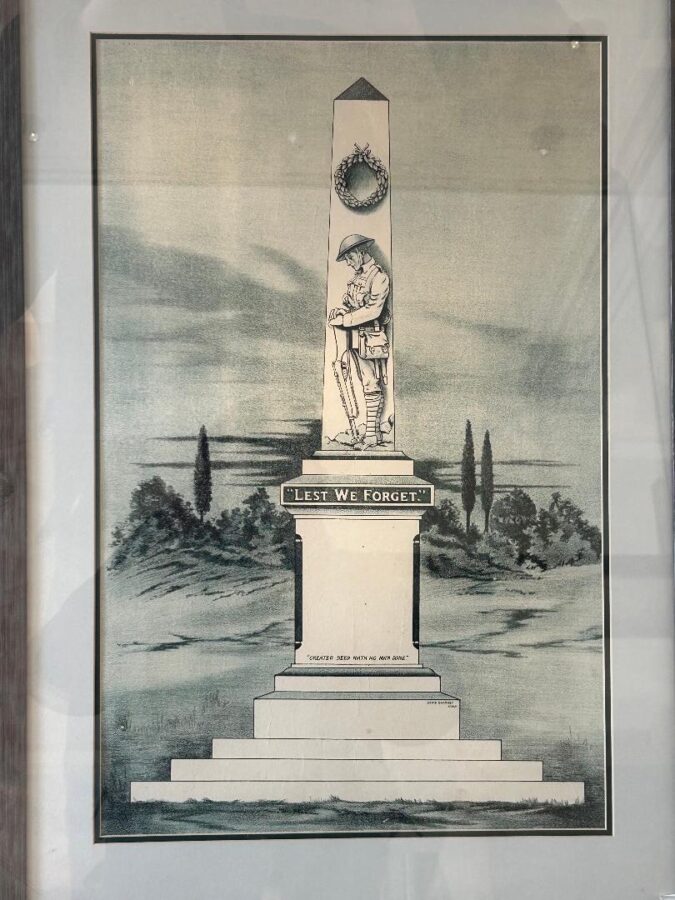
Kieran’s Our City, Our Town Article,
Cork Independent, 17 April 2025
Making an Irish Free State City – Unveiling the Great War Memorial
In the winter of 1924 to the spring of 1925 fundraising for the Great War memorial on Cork’s South Mall continued at pace. A design was also chosen by the Cork Independent Ex-Servicemen Club. Denis Sharkey, a Cork sculptor, was chosen. An Irish Examiner advertisement on 16 April 1898 denotes that Denis had just taken over his father’s business. The D Sharkey Marble and Monumental Works was originally based at High Street and then moved 102 Douglas Street. An advertisement for Denis on 17 April 1912 locates him at Blackpool Bridge and details that the business made crosses, headstones, chase and original designs.
A delay in the quarrying of stone at Ballinasloe in County Galway for the Great War memorial meant that the original plan for a November 1924 unveiling was missed. In a meeting of the Cork War Memorial Committee in early March 1925, committee member Mr P Byrne noted that it was great pity that they had to disappoint the public on Armistice Day. He outlined that the quarries in Ballinasloe were flooded due to heavy storms. However, since they received the stone, good progress had been made by the contractor on the execution of the work. Mr Byrne continues that he had been interviewed by several relatives of the fallen with reference to their names being inscribed on the stone. He noted that the charge for inscription was very reasonable and he hoped that many more would avail of the opportunity to have the names of their relatives inscribed on the monument.
Mr T O’Neill highlighted that there was no doubt that great credit was due to the committee in general. It was their first attempt in organising such a large project. He hoped that their Flag Day on 14 March 1925, which was entitled “Forget Me Not Day” would be generously supported.
On 17 March 1925, the unveiling of the Great War memorial took place at the South Mall, the ceremony being performed by General Standish Harrison, late commanding officer of Royal Munster Fusiliers’ Depot, who took the salute from the foot of the memorial. Many thousands of ex-servicemen, and widows and orphans of the men in whose honour the memorial was erected, were present at the ceremony.
The Cork Examiner describes that the day’s programme was an elaborate one and opened with parades of ex-Servicemen at eleven o’clock. The two organisations in Cork – the Cork Independent Ex-Servicemen and the Cork branch of the British Legion – participated. They were led by General Harrison and members of the Executive Committee of both parties, marched to the Cathedral, where they attended High Mass.
The High Mass at the North Cathedral was celebrated by Bishop Cohalan. A large number of the city’s clergy were present. There was an immense congregation in the church composed chiefly of those taking part in the subsequent procession and unveiling ceremony. At the conclusion of the Mass the Roman Catholic party was joined by the Protestant party, who had formed up on St Mary’s Road, and the procession to the South Mall then commenced.
The Cork Examiner describes that the procession included several thousand ex-servicemen wearing their military decorations and led by their old officers, a large number of ladies bearing beautiful wreaths, relatives of the fallen men, many children wearing the medals of their dead fathers, and a big number of the general public. Six bands were in attendance – these being the Independent Ex-servicemen’s Band, the Legion Band, the Parnell Guards, the Barrack Street Band, the Greenmount Industrial School Band, and the Lee Pipers’ Band.
Fr Scannell – also wearing his military decorations – walked at the head of the members of the Cork branch of the British Legion. Immediately preceding these in the procession was General Harrison’s carriage, in which were the General and Gerald Byrne, chairman of the Cork Independent Ex-servicemen, J R Connolly, chairman of the Cork branch of the British Legion, and J Lee, secretary of the War Memorial Committee.
The procession route followed was via Shandon Street and Pope’s Quay to Bridge Street, and then by MacCurtain Street, Brian Born Bridge, Merchant’s Quay, St Patrick’s Street, and the Grand Parade, to the Memorial at the western end of the South Mall. Thousands lined the streets through which the procession passed.
When the memorial was reached at 2.15pm, the executives of both organisations formed up on three sides of a square surrounding the baseof themonument, while relatives of the fallen men and public representatives were accommodated inside the railings of the little park in which the memorial stands.
Under the direction of Bandmaster Mr Deane, Greenmount Industrial School Band, buglers drawn from both of the ex-servicemen’s organisations sounded the Last Post, and immediately afterwards the ceremonies associated with the unveiling commenced.
The Chairman, Gerald Byrne, said there were assembled to unveil a monument to their comrades who fell on the different fronts fighting for the freedom of small nations. He desired to thank, on behalf of the Cork Independent Ex-Service Men, General Harrison for coming to the city to unveil the memorial. He also thanked for their attendance, Mr Michael Egan, Mr John Horgan and Mr D F Doyle, who had been their friends throughout the period of the erection of the monument, and in addition to Fr Scannell who was at their service at all times.
Caption:
1300a. Denis Sharkey’s original sketch for the First World Memorial, South Mall, c.1924 (source: Francis O’Connor & Cork Public Museum).
Next April Historical Walking Tours with Kieran, All tours free, 2 hours, no booking required
Saturday 26 April, The Cork City Workhouse Tour; learn about Cork City’s workhouse created for 2,000 impoverished people in 1841; meet just inside the gates of St Finbarr’s Hospital, Douglas Road, 1pm.
Sunday 27 April, Fitzgerald’s Park: The People’s Park Tour, from stories on the Mardyke to the Cork International Exhibition, meet at the band stand, 1pm.
